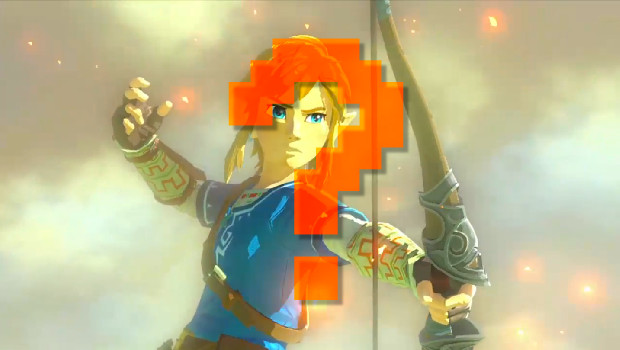In perspective: Why is everybody making MOBAs?

MOrBAid curiosity
If you pay much attention to new game announcements, you may have come to the conclusion that everything--everything--is a multiplayer online battle arena. Battleborn is a MOBA. The Witcher Battle Arena is a MOBA. Both of those were announced by otherwise reasonable developers (Gearbox and CD Projekt Red, respectively) in July.
More than a dozen other MOBAs are in active production, and that's not even counting League of Legends and Dota 2. So why on earth has every studio decided to make a game about killing little NPCs and knocking down towers on the same damn map? There are plenty of reasons. Let's start with the most obvious...

LoL and Dota 2 print money
Ok, so the obvious impetus to make a MOBA is that League of Legends and Dota 2, the two most prominent examples of the genre, are incredibly popular and everybody wants to, ahem, "get them some of that." Popular and profitable are not the same thing, of course, especially when you're talking about games that can be enjoyed without spending a dime.
Neither Riot Games nor Valve release specific figures about how many of their players spend real money in-game (though one report put League's earnings for 2013 north of $600 million). With 67 million players pushing lanes in League every month, Riot can afford to give the majority a free ride. As for Dota 2? Look at the The International's player-contributed prize pool and tell me its players don't pay the bills.

MOBA is a broad(ish) term
Another qualification: the term "MOBA" implies lanes, towers, and creeps, but aside from that it has a lot of leeway. It isn't quite as meaningless of a designator as "roguelike" but give it a handful of bombastic Steam Greenlight descriptions and we'll be there.
Aside from combining role-playing and real-time strategy influences, the genre subsumed another big wave in gaming: tower defense. You still see plenty of tower defense titles pop up on the App Store or in browser games, but despite its popularity it never managed to win over much of the core gaming audience. MOBAs took tower defense sensibility and mixed it with more familiar genres for a cocktail that's palatable to more hardcore tastes.

Mo' heroes, mo' microtransactions
MOBAs pile on new characters like college students collect loan debt, and they add new modes like college students take Friday morning courses. Characters are easier to design and playtest than whole new maps, sure, but that's only half the reason; new maps or modes fracture the player base, whereas adding new characters to the same scenarios doesn't.
Thus, the basic design is microtransaction friendly. Riot can sell a new champion every few weeks without disrupting too much of the existing game and community. Dota 2 heroes are all free-to-play, but the more characters Valve can convince players to try out, the more hats (and capes and swords and guns) it can sell them. Makes Call of Duty map packs look primitive, doesn't it?

They're netcode-friendly
You can turn on your system and shoot at folks who are oceans away in less than a minute. The technology that makes intercontinental teabaggings not only possible but natural deserves more appreciation, and so does the work required to make that technology function.
On the other hand, MOBAs were built on RTS architecture--literally, considering DotA, the original MOBA, was a Warcraft III mod. Players move in two dimensions, and they get there by clicking one spot and waiting. They attack by pressing a single key and selecting a target or direction. Don't get me wrong, a lot of network magic still happens to make matches smooth, and action-heavy games like Dead Island: Epidemic may chew up more bandwidth. But the basic design is better suited to internet play across a range of connections than, say, Battlefield 4.

They're stream-friendly
LoL and Dota 2 dominate the top slots of game streaming websites like Twitch not just because they're popular with players, but because they're some of the most viewer-friendly titles ever created. If you've ever caught a popular stream, you know they offer great tools for watching and commentating matches.
But almost any multiplayer game can have good spectator options if the developers care to implement them. It's the traditional MOBA design that makes them a streamer's delight: they're viewed from the top-down with the camera pulled back, providing a familiar TV sports perspective; there's always a hotspot to zoom in on without missing too much off-screen action; characters have colorful costumes and distinct silhouettes that are clear even if the stream has a shoddy bitrate. A great viewing experience means more people want to try the game, and the cycle continues.

They're not casual
Heroes of the Storm is a deep game. A lot of strategy goes into putting together a balanced team, choosing the right talents, and using the various maps to your advantage. So why does Blizzard's MOBA have a reputation for being fast, easy, and casual? Because the baseline level of complexity for the genre is stratospheric. But many MOBAs are still super successful, squashing the idea (along with Dark Souls) that simplification is the best way to capture an audience.
Thanks to this fact, developers who are looking for a bandwagon to jump on can at least choose one with a history of deep strategy and reasonable microtransaction models. Would you rather they made another Clash of Clans clone?

They're good for groups of friends
Many games are "social" but far fewer are much fun to play with a group of friends. They let you post your accomplishments to Facebook, stream your game so everybody can watch, and compare leaderboard scores; but once you finally manage to round up your pals for a match, the game itself isn't half as fun as goofing around on voice chat.
MOBAs are at their best when played with a regular group. Communication is super important, so keeping everybody on Skype actually serves a purpose beyond finding out who can belch the loudest. Spending 45 minutes in a match together is a commitment, but it isn't so long that everybody needs to give up their whole evening. And unlike an MMO, character levels reset every match, so nobody gets too far ahead (account levels are another story, but you can ignore them for the most part).

The end-genre
So yeah, MOBAs are uniquely suited to a new age of online gaming, from business model to multiplayer to stream-friendliness. Do you think that justifies the volume of MOBAs hitting the market? Is Nintendo going to announce that Zelda Wii U has actually been a MOBA all along, with legions of Deku scrubs and Bokoblins for creeps? Let us know in the comments.
Worried that Zelda joke might not be too far from the truth? Read why a growing internal rift is bad news for Nintendo. Or check out 8 ways how gamers always ruin their games.

I got a BA in journalism from Central Michigan University - though the best education I received there was from CM Life, its student-run newspaper. Long before that, I started pursuing my degree in video games by bugging my older brother to let me play Zelda on the Super Nintendo. I've previously been a news intern for GameSpot, a news writer for CVG, and was formerly a staff writer at GamesRadar.


